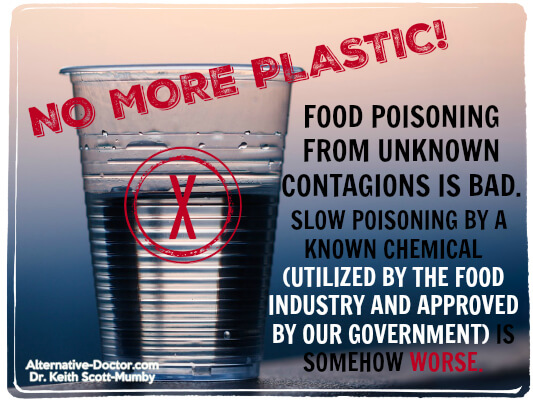The pollution you’re exposed to in the modern world seems to be everywhere. Air pollution, water pollution, unknown (or undetected) toxins in the home and workplace, pesticide use, and so much more bombard your system day after day.
Then there are the “safe” compounds that are deliberately utilized in your life that are completely toxic to your cells but continue to be allowed (often without your knowledge or consent).
One of these is Bisphenol-A (BPA).
The dangers of BPA have been studied extensively and the long-term damage it causes the cells of the human body are well known.
BPA Toxicity May Cause
- Infertility and other reproductive disorders
- Erectile dysfunction
- Heart disease
- High blood pressure
- Diabetes
- Liver abnormalities
- Obesity
- Alteration in sex hormones in men
- Problems with memory or learning
- Loss of brain cognition and behavioral development abnormalities
- Asthma
- Premature puberty
- Breast cancer (and other forms are also likely)
- Poor fetal development
The U.S. Federal Food and Drug Administration (FDA) states that BPA is safe at low levels. Unfortunately, we passed “low levels” long ago.
In the 2004 National Health and Nutrition Examination Survey conducted by the Centers for Disease Control and Prevention (CDC), measurable levels of this toxic substance were found in 93% of more than 2,500 urine samples – including children age six and up.
Children are particularly susceptible to BPA toxicity because their bodies are incapable of getting rid of inorganic materials known as xenobiotics. As a result, the levels of BPA detected in their urine tends to be higher than the levels detected in adult subjects.
The biggest danger of BPA is that it’s an endocrine disruptor. It mimics human estrogen and that is known to be very dangerous for us at any age. It is even more dangerous for unborn babies, small children, and developing young adults.

Your Exposure to BPA
- Plastic lining of canned foods such as soup, meat, and vegetables
- Polycarbonate plastics (hard plastics)
- Bottle tops
- Lining of aluminum cans (specifically soda cans)
- Thermal and carbonless paper (receipts)
- Baby bottles, storage containers, plastic wrap, and disposable plastic ware
- Dental sealant and compounds
- Water bottles
Again, the makers of these plastics as well as the FDA tell us these products are perfectly fine for our daily (often constant) use. It’s a cheap, versatile substance so the profit is steady.
In the United States, approximately 75% of cans are lined with BPA and it brought in $13 billion in sales worldwide in 2013. The numbers are only expected to get higher.
Manufacturers of the stuff are quick to downplay the profits of more than 10 billion pounds of BPA used annually. Instead, they point out how it changed the safety of the food supply and stopped outbreaks of food poisoning.
University of Illinois – Chicago physiologist, Gail Prins disagrees with the FDA. “There’s too much data consistent across studies – time and time again – to ignore or suggest BPA has no effect on humans.”
As of 2013, there were more than 1,000 BPA studies involving animals and 100 observational human studies to determine the toxicity and repercussions of long-term BPA exposure. All of them prove that BPA is bad for human (and animal) health.
The proponents of BPA will also discuss the studies that were inconclusive. What they may fail to mention is that those studies were funded by the very industry who profits from the manufacture and sale of Bisphenol-A.
Something of a conflict of interest.
The Dangers of BPA Negated
Most people will suggest the BPA-free plastics but honestly, we don’t know much about those (or their long-term effects) either. My suggestion is to use glass as often as possible to store food. You shouldn’t microwave using anything but glass either.
As for canned, pre-processed foods and drinks? You know fresh is best.
Food poisoning from unknown contagions is bad. Slow poisoning by a known chemical (utilized by the food industry and approved by our government) is somehow worse. No more plastic!
